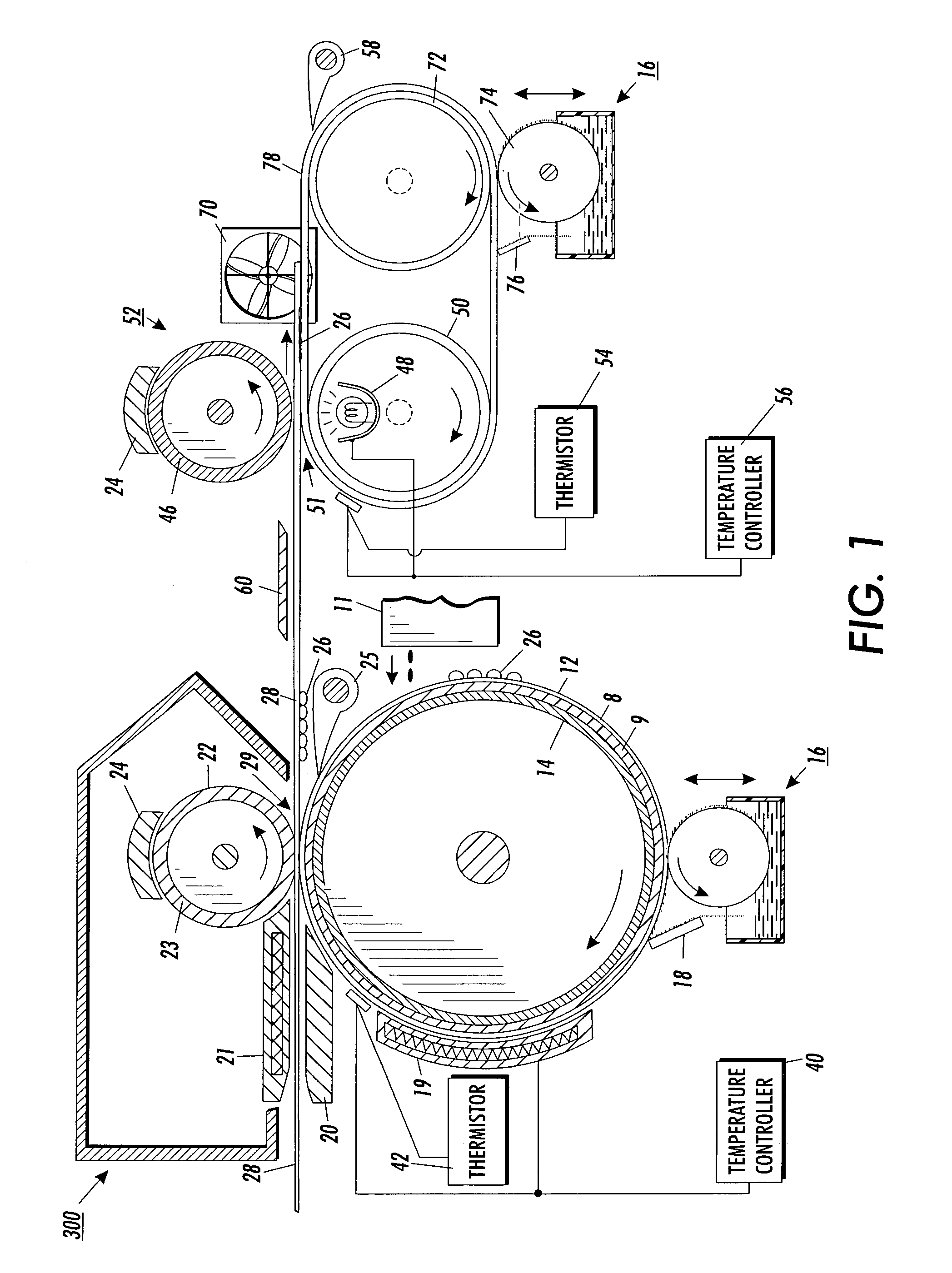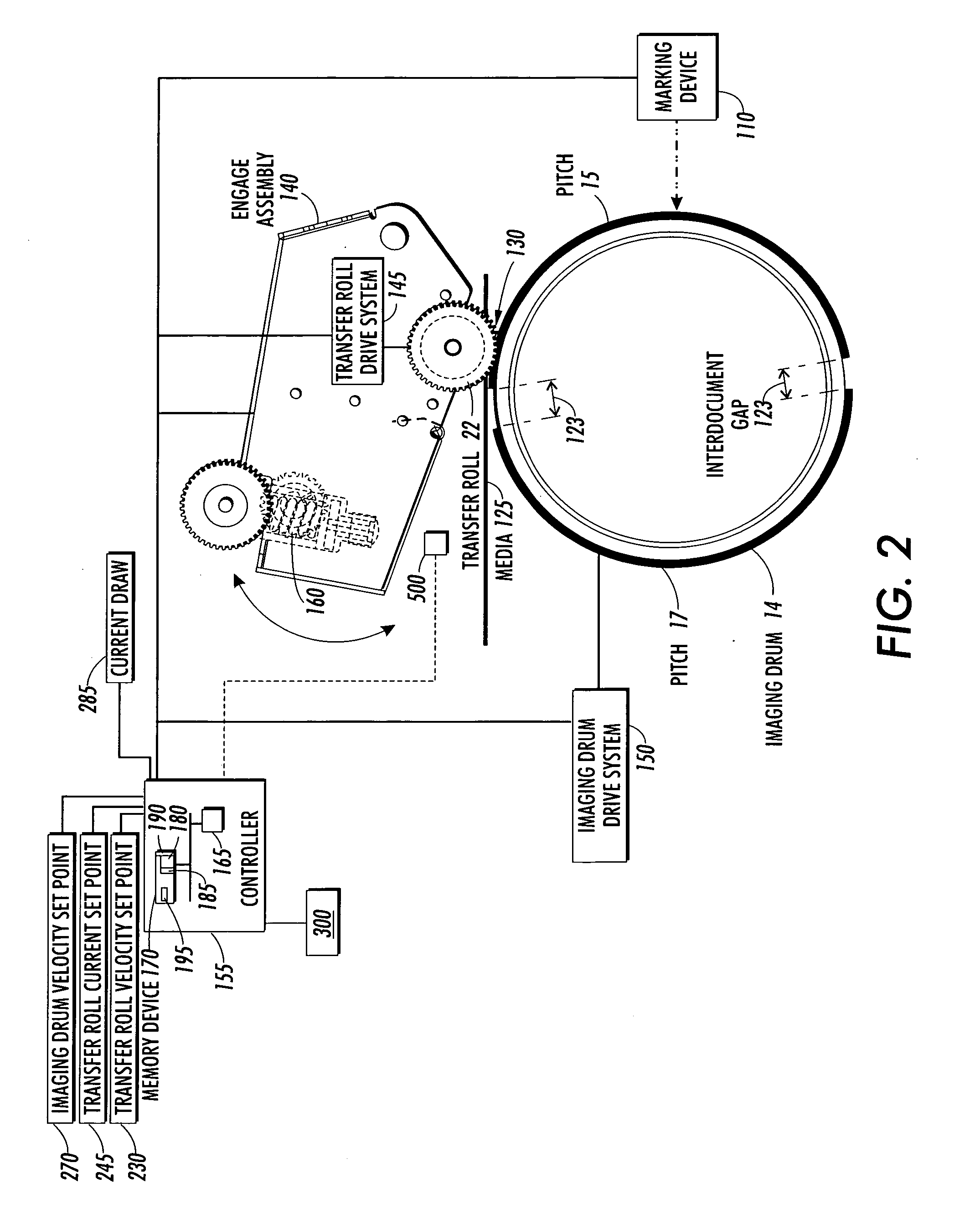Transfer roll engagement method for minimizing media induced motion quality disturbances
a technology of media induced motion and engagement method, which is applied in the field of drums, can solve problems such as motion quality problems, image mis-registration, or other undesirable effects, and transient rotational disturbance of the drum
- Summary
- Abstract
- Description
- Claims
- Application Information
AI Technical Summary
Benefits of technology
Problems solved by technology
Method used
Image
Examples
Embodiment Construction
[0013]FIG. 1 discloses a diagrammatical illustration of an imaging apparatus 10 of the present invention for applying a two-step transfix process whereby a hot melt ink is printed onto an transfer surface for transference to a receiving substrate and then transported through a fuser for post fusing. Referring to FIG. 1 wherein like numerals refer to like or corresponding parts throughout, there is shown a printhead 11 having ink jets supported by appropriate housing and support elements (not shown) for either stationary or moving utilization to deposit ink onto an intermediate transfer surface 12. The ink utilized is preferably initially in solid form and then changed to a molten state by the application of heat energy to raise the temperature from about 85 degrees to about 150 degrees centigrade. Elevated temperatures above this range will cause degradation or chemical breakdown of the ink. The molten ink is then applied in raster fashion from ink jets in the printhead 11 to the in...
PUM
| Property | Measurement | Unit |
|---|---|---|
| temperature | aaaaa | aaaaa |
| temperature | aaaaa | aaaaa |
| temperature | aaaaa | aaaaa |
Abstract
Description
Claims
Application Information
 Login to View More
Login to View More - R&D
- Intellectual Property
- Life Sciences
- Materials
- Tech Scout
- Unparalleled Data Quality
- Higher Quality Content
- 60% Fewer Hallucinations
Browse by: Latest US Patents, China's latest patents, Technical Efficacy Thesaurus, Application Domain, Technology Topic, Popular Technical Reports.
© 2025 PatSnap. All rights reserved.Legal|Privacy policy|Modern Slavery Act Transparency Statement|Sitemap|About US| Contact US: help@patsnap.com



